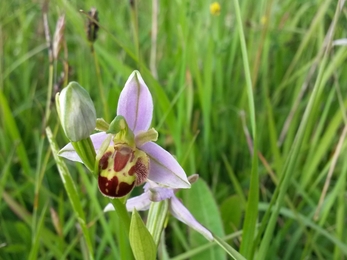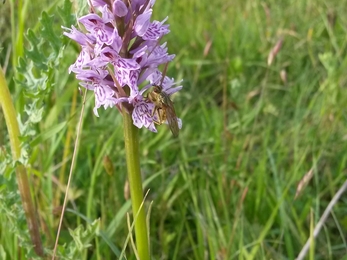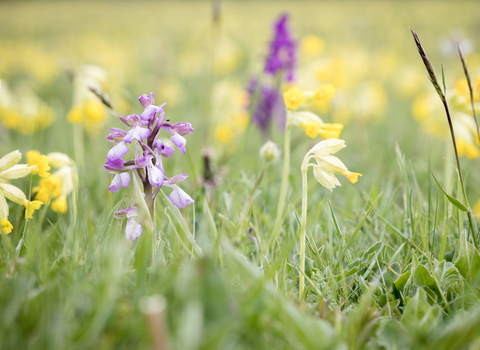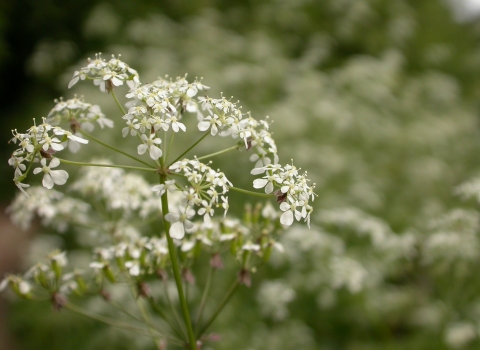Parts of Stockton Cutting nature reserve are now under the management of Warwickshire County Council’s (WCC) Country Parks service. A part of this nature reserve is still managed by Warwickshire Wildlife Trust. Enquiries about Stockton Cutting nature reserve should now initially go to: parks@warwickshire.gov.uk
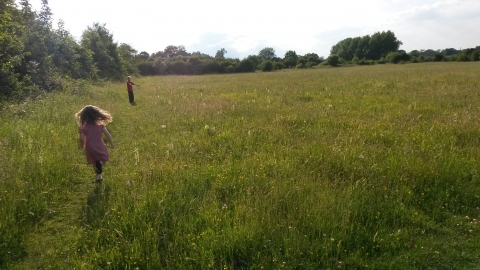
Vicky Page
Stockton Cutting & Tasker's Meadow
Location
Know before you go
Dogs
When to visit
Opening times
Open at all timesBest time to visit
April to AugustAbout the reserve
Parts of Stockton Cutting nature reserve have moved back under the management of Warwickshire County Council’s (WCC) Country Parks service, after over 40 years of successful Warwickshire Wildlife Trust custodianship.
Warwickshire Wildlife Trust (WWT) have carried out habitat and estate management at Stockton Cutting, alongside Ufton Fields nature reserve, on behalf of Warwickshire County Council under an agreement since 1980. Both agreements expired in early 2023 and both parties are pleased to announce that WCC are now in an excellent position to take back management of the land for wildlife.
WCC’s Country Parks and Green Spaces service will use their expertise in habitat management and visitor experience to continue the valuable work of Warwickshire Wildlife Trust (WWT),and its volunteers, supporting local biodiversity and providing accessible options for visitors wishing to immerse themselves in Warwickshire’s unique natural landscape.
By joining the Warwickshire Country Parks portfolio, Stockton Cutting will benefit from the conservation expertise of a team of Specialist Habitat Rangers, providing fresh opportunities for biodiversity projects to align with WCC’s other sites, such as Kingsbury Water Park, Hartshill Hayes Country Park, Ufton Fields and Ryton Pools Country Park.
History of the nature reserve
This is a rare habitat here in Warwickshire and home to lots of orchids, butterflies, birds and fungi. Sites like this can easily be lost to development, fertiliser or reseeding – and we look after more than 50% of the surviving examples in our area. We were able to able to save it thanks to legacies kindly left to us. We named it in honour of Dr Andy Tasker, our former Chief Executive who died in 2012 - in recognition of the contribution he made to nature conservation during his 30 years dedicated to Warwickshire's wildlife.
What's it like to visit?
This nature reserve is made up of Tasker's Meadow and a steep-sided disused railway cutting through limestone, called Stockton Cutting. Grass snakes, rabbit and muntjac are all visitors to the reserve, with occasional signs of the elusive badger. The meadow is a valuable grassland rich with different species. Look out for less common plants like hairy violet, false oxlip, dwarf thistle, autumn gentian, wild thyme and the scarce blue fleabane.
What might you spot?
Six species of orchid can be found here including the largest population of greater butterfly orchid in Warwickshire. Other species include bee orchid, common spotted orchid, pyramidal orchid and green winged orchid (first seen on the site in 2013). Come to spot the many butterflies here from Spring to mid-Summer. Six nationally rare farmland butterflies have been recorded including the grizzled skipper, dingy skipper and white-letter hairstreak.
Love wildlife? Become a member and make a difference on your doorstep
As a member, your subscription will help look after local wildlife and our amazing nature reserves across Coventry, Warwickshire and Solihull. You'll receive a range of benefits, including free entry to over 65 local nature reserves, with member only free car parks where available, and our Wild Warwickshire magazine three times a year.

